

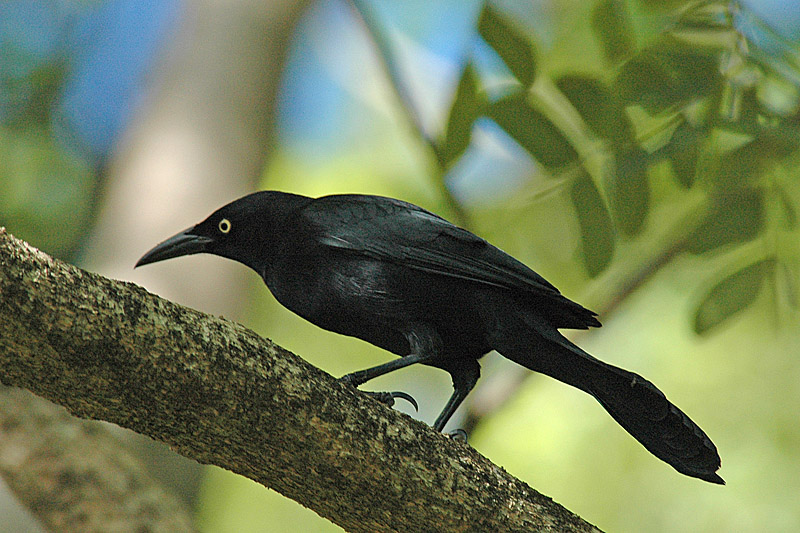
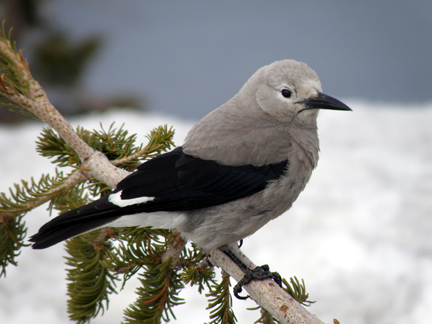


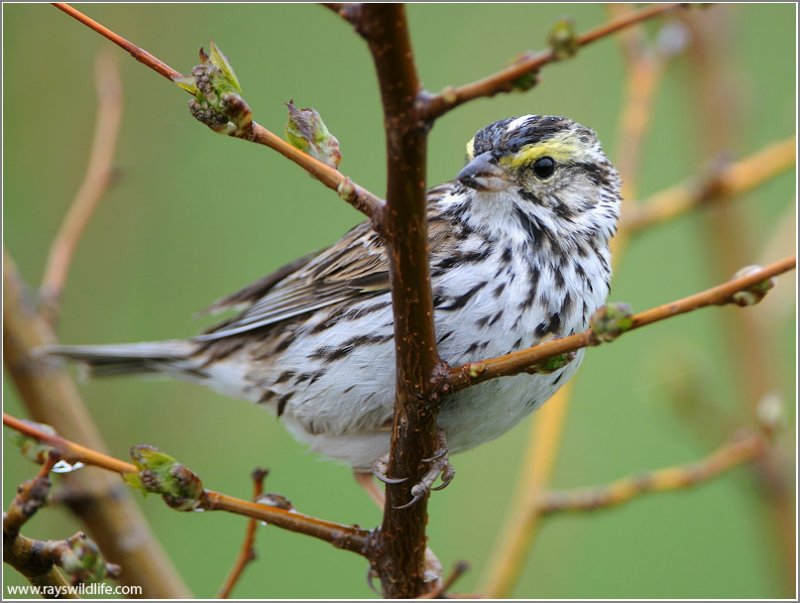
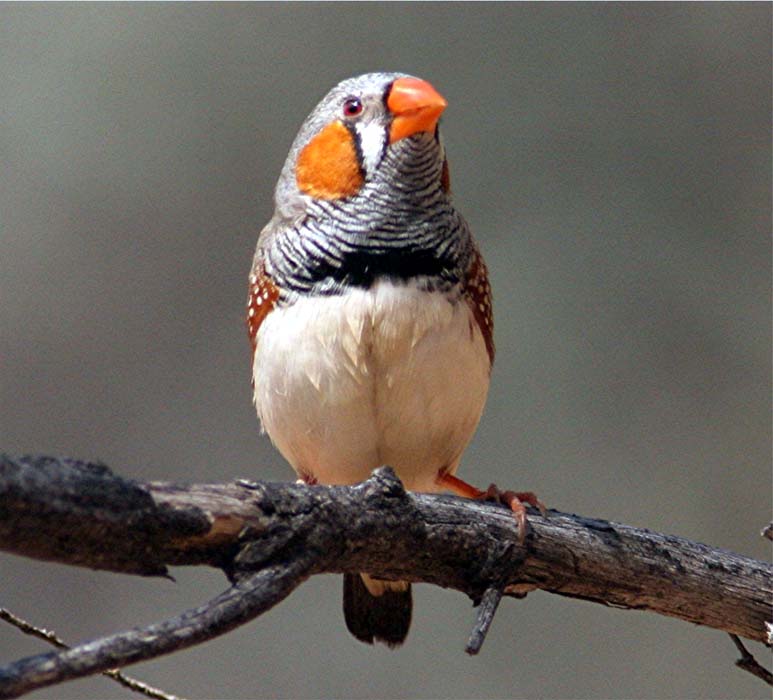

 |
 |
 |
 |
 |
 |
 |
 |
 |
|
Visual Lateralization in Birds:
Lateralization is the specialization of the left and right brain hemispheres for cognitive skills like learning and memory. Hemispheric specialization theoretically has adaptive value because it eliminates neural redundancy while increasing task efficiency. Lateralization is especially easy to study in birds because the information from each eye goes to the opposite hemisphere; this means you can simply cover one of the bird's eyes when testing it on a particular task. Students and I are examining lateralization in a variety of different contexts, including pattern discrimination, prey detection, and mate choice. Honors
student Diana Gonzalez and I tested European Starlings on a
visual discrimination task (upper right), and found that they showed
the opposite visual lateralization compared to non-passerines (chickens
and pigeons); they were able to learn the discrimination more quickly
when using the left eye (right hemisphere) than when using the right
eye. Honors student Joyce Christensen and I also found that in
starlings there is unilateral transfer of prey detection skills from
the right to the left hemisphere, suggesting that long-term storage of
this cognitive ability is lateralized in the left hemisphere. Most recently, I have begun collaborating with Dr. Debbie Kelly
at the University of Manitoba to study the lateralization of the search
image in the avian brain using the technique of FDG-microPET
neuroimaging described below.
While on sabbatical in Australia, Dr. Jim Mountjoy and I collaborated with Dr. Sarah Pryke and Dr. Simon Griffith to test the hypothesis that visual mate preferences are lateralized in the right eye/left hemisphere system of the Gouldian Finch. This species occurs in three different head colors: red, black, and yellow. Each morph has a strong visual preference for mates of its own head color, and this preference enhances fitness. We tested monocular birds in this mate choice chamber (right). Click on the photo to watch a shortened video clip of a trial. (The black male has his right eye open and he is just about to visit a black female; he tries to reach her, then bows and sings.) Is love lateralized? Check out our Biology Letters publication below! See some of the coverage our research has received: [Discover Magazine] [Science News] [EarthTimesOnline] [GrrlScientist] [The Conversation] [The Royal Society] [Scientific American]. We now have taken our research to the neural level by using non-invasive in vivo FDG-microPET neuroimaging of zebra finch brains to confirm the lateralization of mate preferences and mate choice decisions in a particular hemisphere, and to determine which specific regions of the brain are involved in these cognitive tasks. To do this work, we have been collaborating with Drs. David Perkel, Donna Cross, Robert Miyaoka and John Marzluff at the University of Washington. New pilot data for six zebra finch males show that they court high- and low-quality females normally following injection with FDG tracer. Scans are now being normalized and analyzed. In this raw FDG-PET image from a single subject (right), greater regional uptake of FDG can be distinguished visually in the left entopallium (a region known to be important in visual discrimination). The image is a non-normalized, maximum intensity projection in ventral view, so left and right are reversed. So far, we have found that the degree of left hemisphere lateralization for FDG uptake in the entopallium tends to be positively correlated with courtship of the high-quality female. This is a novel approach to the study of mate choice behavior and it should lead to exciting new discoveries in the field of sexual selection. We look forward to involving Knox students in this research in the near future! |
  |
|
Cognitive Skills of the Domestic Dog: We are especially interested in finding training techniques that will enhance adoptability in shelter dogs. However, because dogs co-evolved with humans, we are also interested in testing their ability to understand human social cues, and the factors - such as personality - that may affect this ability in different individual dogs. My Honors student, Corinne Butzen, asked the same question about personality but with dolphins instead of dogs! She found that the dolphins who were the most curious, creative, and confident performed the best on the human-cued task. |
 |
| Group Foraging and Public Information Use: Animals forage in groups in order to reduce the risk of predation, but they also may take advantage of the information that other group members provide about the location of food and the quality of areas with hidden food. In experiments carried out in the lab and field, I have shown that group foraging starlings recognize the successes and failures of other individuals and that they combine this "public" information with their own personal (current) and private (past) information to assess the quality of a foraging area and make optimal foraging decisions. |
 |
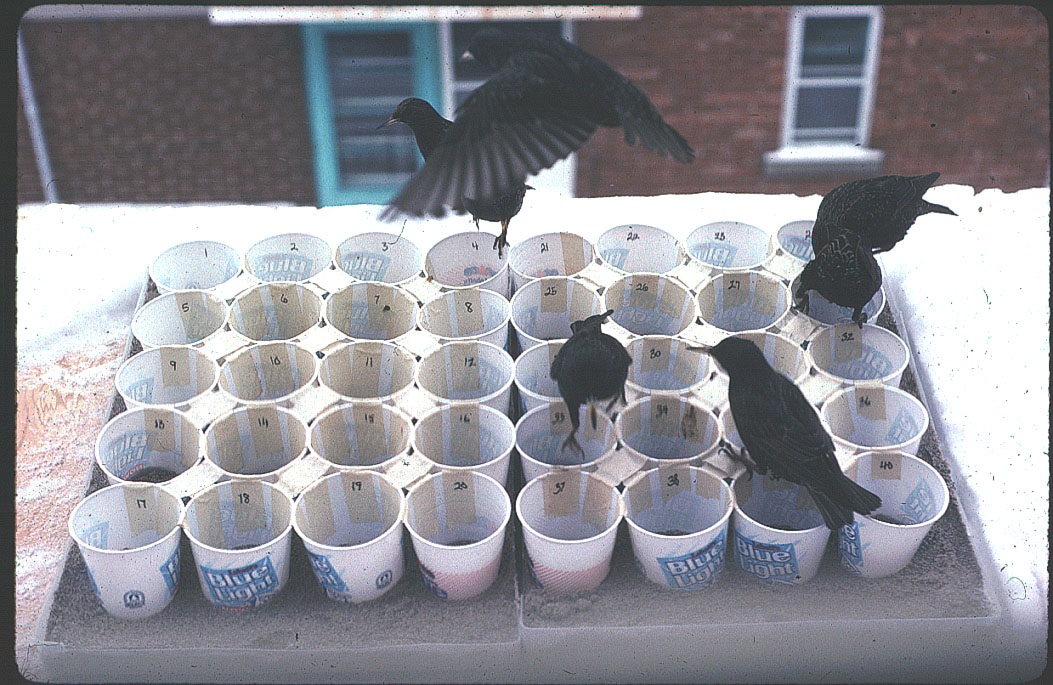 |
| Sociality & Social Learning: Social learning is the acquisition of novel skills or associations from observing the behavior of others. I am interested in understanding the factors that favor the transmission of these novel skills, from both proximate and ultimate perspectives. For example, I have shown that starlings can learn a discrimination task most quickly when they observe a demonstrator ALWAYS making mistakes! I have also compared the social learning abilities of highly social and non-social species (such as the Clark's Nutcrackers on the right) to test the hypothesis that social learning is an adaptive specialization to social living. Currently, my Honor's student Anna Kraemer and I are collaborating with Dr. Kristy Gould (Luther College) to test the social brain hypothesis, using five different species of corvids. Social learning also has applications to conservation. Most recently, my students and I have been examining cultural transmission of predator recognition as a technique to enhance the ability of captive-bred individuals of endangered avian species to recognize and respond appropriately to novel predators in the wild. |
 |
|
Age and Foraging Skills: Juveniles and adults of the same species can behave quite differently from one another and this is particularly true with respect to foraging. Upon leaving the nest, young birds frequently search for prey in different ways, forage in different areas, handle prey differently, or select distinct types of prey compared to adults. In Savannah Sparrows (right), Nat Wheelright and I found that young birds show a threshold jump in foraging skills at 21 days of age. This jump is adaptive, because it occurs just prior to the age at which parents cut off care to start a second brood. Students and I have also compared the patch assessment abilities of captive juvenile and adult starlings as they searched for hidden prey. Juveniles had a reduced ability to assess patch quality and a lower foraging efficiency due to an inability to keep track of where they had already searched. Interestingly, although juveniles initially over-sampled and adults initially under-sampled, both age classes converged on the predicted rate-maximizing patch departure decision in only three days. |
 |
 |